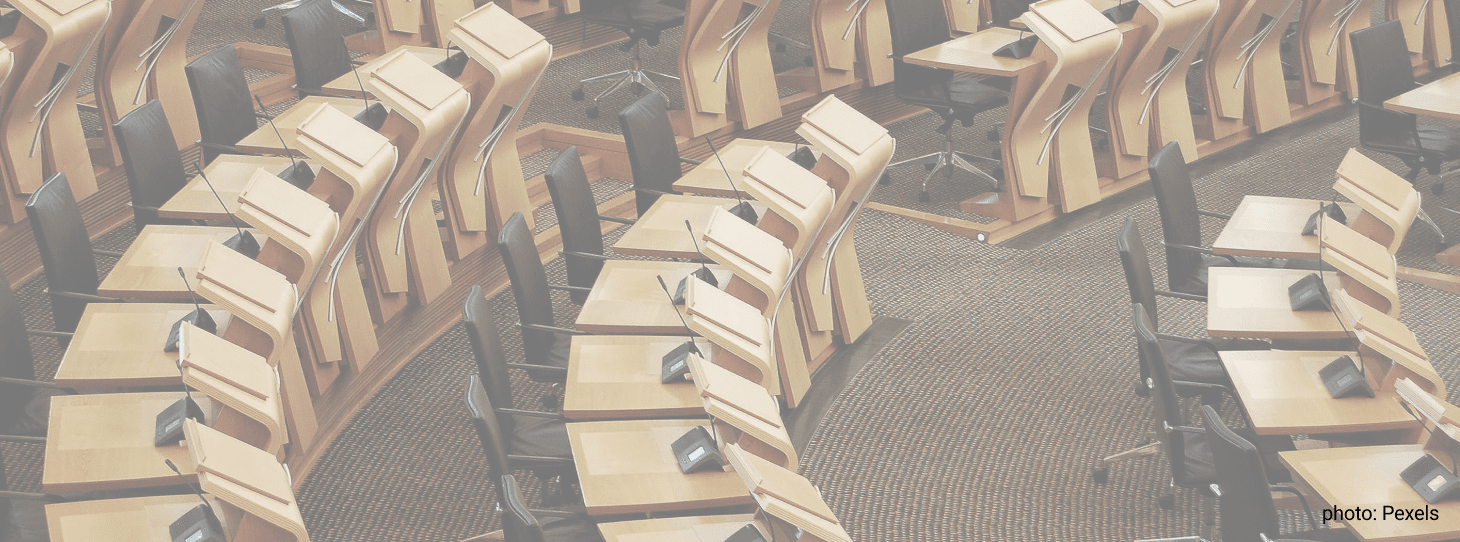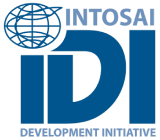
SAIs are responsive to emerging issues, but struggle to strategically engage for impact
During recent years, there has been increased discussion about the impact of SAIs. We can understand their potential for impact through INTOSAI P-12, that establishes how a SAI can add value to the life of citizens through its work. The overall objective of SAIs is to strengthen accountability, transparency, and integrity of government through their public sector audit.21INTOSAI P-12 The Value and Benefits of Supreme Audit Institutions – making a difference in the lives of citizens. In addition, SAIs should demonstrate their relevance to citizens and other stakeholders. This chapter looks at the SAI’s ability to have impact through their audits, reporting, stakeholder engagements and follow-up.
SAIs were responsive to COVID-19
Globally, SAI mandate to do financial, compliance and performance audit is almost universal. There are regional differences related to actual practices, as presented in Professional Capacity, but only a handful of SAIs report to have legal limitations in carrying out these audit types. In addition, 21% of SAI have a jurisdictional mission, and can conduct jurisdictional control activities.
[21] INTOSAI P-12 The Value and Benefits of Supreme Audit Institutions – making a difference in the lives of citizens.
Figure 46 – SAI mandate according to audit streams
Figure 47 – Legal mandate to audit Donor Funds

Survey results on the extent of mandate, shows that while 82% have a mandate to audit municipal level entities, 64% of SAIs have a mandate to audit regional level entities.22When such a level exists. It is worth noting that 96% have the legal mandate to audit state-owned enterprises, while 79% have the mandate to audit public private enterprises, both important enablers of national economic development and job creation. Almost universal at 96%, is the mandate to audit tax authorities, followed by 86% with a mandate to audit security and defence funds and budgets.
Less common but still widespread is the mandate to audit donor funds, reported by 63% globally. The regional distribution shows that this mandate is almost universal in AFROSAI-E at 91%, followed by 72% in PASAI, 71% in ASOSAI, 67% in OLACEFS and 65% in CAROSAI. The regional distribution confirms that SAIs from countries that are recipients of development support could play an important role in overseeing the use of donors’ funds coming into the country. This is confirmed by the distribution by income level, as only 42% of SAIs in HI countries have this mandate, against Lower Income countries where the average is 73%. It’s also worth mentioning that SAIs are likely to have this mandate more often in countries with higher levels of corruption, further reiterating that SAIs could play an important role in overseeing funds management in these contexts.
[22] When such a level exists.
During the last three years SAIs have been busy conducting audits on public procurement (87%), emergency spending related to the COVID-pandemics (87%) and collection of taxes and revenues (85%). While public procurement and tax and revenue are common audit topics for SAIs, they have become even more important to assess measures put in place during the pandemics, and the numbers reported probably overlaps with COVID-audits. In ARABOSAI, ASOSAI, EUROSAI and North America, auditing COVID-spending was universal with 100%. Audits are also almost universal in AFROSAI-E, OLACEFS and PASAI. In CAROSAI and CREFIAF numbers are slightly lower with 74% and 73% respectively. For CREFIAF SAIs, limitations could be linked to mandate, as only 27% of SAIs have the mandate to audit donors’ funds, where parts of emergency funds to low-income countries came from.23According to their support trackers, World Bank and IMF issued financial assistance to 1over 00 countries and 90 member countries respectively during 2020-2022.
[23] According to their support trackers, World Bank and IMF issued financial assistance to 1over 00 countries and 90 member countries respectively during 2020-2022.
See also:
IMF Financing and Debt Service Relief and The World Bank Group's Support to Countries during the COVID-19 Crisis
Figure 48 – COVID-19 Audit, publication and follow up on emergency funding
Figure 49 – Audits undertaken in 2020-2022
Public-Private Partnership by INTOSAI Region
Audits of public debt management, another area linked to global developments, were undertaken by 68% of SAIs. The practice was most widespread in ASOSAI, ARABOSAI, AFROSAI-E and OLACEFS. Fewer SAIs have undertaken audits of the banking sector (43%). This was done most frequently in ARABOSAI (86%) and ASOSAI (82%). The results could be due to public ownerships of banks. Only 4% did so in CAROSAI, where international private ownership models is the norm. Despite the high proportion of SAIs having a mandate to conduct audits of Public-Private Partnerships (PPPs), only 49% conducted audits in this area. The gap between mandate and action is present in several regions, most remarkably in CREFIAF, where 100 percent confirms to have the mandate, but only 20% conducted audits on PPPs. Similarly, 91% of SAIs in AFROSAI-E confirms to have a mandate, but only 57% undertook audits of PPPS. It’s concerning to see that it’s less common amongst SAIs in countries with high levels of corruption to do PPP audits.

SAIs are turning their focus towards the performance of SDG implementation
Auditing sustainability has increasingly become a priority for SAIs in the past three years. 66% conducted audits on the Sustainable Development Goals (SDGs) and 64% undertook environmental audits. The Global Survey results also show that 49% undertook performance audits of the preparedness of national governments to implement the SDGs, while 43% undertook performance audits on national implementation of SDGs. The latter is a substantial increase since the GSR2020 when only 30% did the same. There’s also an increase from 16% to 22% on the proportion of SAIs that carry out audit for the purpose of country reporting against SDG targets. Another 49% also confirm to carry out audits on other specific SDGs. Examples mentioned here are SDG 1 No Poverty, SDG 3 Good Health and Wellbeing, SDG 6 Clean Water and Sanitation, and SDG 13 Climate Action, and almost all SDGs are covered by one of more SAIs. One SAI reports that the SAI is doing performance audits tailored to cover the aspects of specific SDGs.
Figure 50 – SDG audits in action
Figure 51 – Professional Capacity Development according to topics | Recent and Planned
Bars show professional capacity development areas over 2020-2022, with plans for 2023-2025; Based on responses from 90 developing-country SAls

While the auditing of the implementation of SDGs is on the rise, audits on SDG 5, 'achieve gender equality for all girls and women', seems to be limited, with only 27% having done audits in this area. The practice is common in The Americas with 100% in North America and 73% in OLACEFS, the latter predominantly through cooperative audits. The overall practice of gender audits is similarly low with 31% and mainstreaming of gender in audit even less common and only done by 21%. Nevertheless, the numbers represent an improvement since GSR2020, where 24% did audits and 14% mainstreamed gender. The improved results seems to stem from an overall increase across regions, in particular driven by OLACEFS, ASOSAI and CREFIAF on gender audits, and OLACEFS and ASOSAI on mainstreaming.
It looks like the focus on SDGs have also been driven by SAI involvement in capacity development activities. According to the Global Survey, 46% of SAIs in developing countries, received capacity development support on auditing the SDGs during 2020-2022. 51% plan to build capacities in the area also in 2023-2025, suggesting a sustained interest in the topic. The graph on the left shows received support and intended future capacity building in technical audit topics for 90 developing countries. It suggests that in the coming years, in addition to SDGs, IT audit, environmental audits and climate change will be trending in topics SAIs will want to build capacities to audit. The expressed doubling of interest (compared to received support) in aid programmes, public debt and tax collection audits is also worth mentioning.

SAI reporting practices need to be better understood
SAIs have a number of key mechanisms to ensure their audit results are well understood and used by stakeholders. These Include:
- Reporting
- Publication
- Communication
- Debate of results
- Follow-up
Some mechanisms, like audit reports, are linked to statutory duties, while others are options that SAIs could exercise. Common for both is that they require interest, willingness and understanding of the SAIs engagement with key stakeholders to be successful. The following sections summarise the analysis of Global Survey results in these areas. We start by looking at reporting and then move on to the communication of audit results, before discussing audit follow up.
An important aspect of making sure audit results are relevant and available to stakeholders, is timely reporting and tabling of reports. This is commonly derived from a legal obligation to report, and therefore an institutional mechanism that ensure that the audit results are presented to the parties with a mandate to act upon them. There is often a timeline linked to the obligation to report.
Figure 52 – Timeliness of tabling of consolidated audit report to legislation
(or other recipient determined by law)

As can be seen from the graph above 63% of SAIs issued their annual audit report within the stipulated legal time limit. The results are almost identical to the GSR2020 (61%), suggesting there could be some structural issue explaining SAIs abilities to the timely tabling of reports. Delayed tabling one year after receipt of statements seems most common in SIDS with 23%, which may suggest that structural issues delaying Parliamentary presentation, combined with small staff which could create challenges when it comes to timeliness. Issuing reports late also correlate with higher levels of corruption. The analysis does not uncover any patterns related to interference in accessing information or reporting which could explain late submissions. However, SAIs that have reported delays, or are operating without legal deadlines for submissions of the annual audit report, in 40% of cases do not have any quality monitoring system in place for any audit types, suggesting perhaps that late submissions could be explained also by more internal capabilities.
PEFA results can also shed light on the timeliness of audit reports. Analysis of a sample of assessments shows that 63% of SAIs submitted their audit reports to Legislature or another body responsible for public finance, within nine months of receiving the financial statements. The data suggests that in fact most from SAIs to the relevant stakeholder is relatively timely.
An interesting aspect of the results of the two data sources is that a region like CREFIAF is doing relatively well when it comes to timely submissions. According to the Global Survey, 47% of SAIs report to submit results within the stipulated deadline, and according PEFA assessments, 46% of CREFIAF SAIs are doing this within three months. While regions like OLACEFS and EUROSAI have a larger proportion of SAIs with timely submission, this also supports the indication that there may not be institutional elements alone, (like the propensity that a SAI of Legislature model is more likely to report to Parliament, and that there are obstacles for other models) that could explain late submission of reports.
Figure 53 - PEFA 30.2 Submission of audit reports to legislature by INTOSAI region

As presented in Chapter 1, 86% of SAIs published reports, but the average proportion of published reports declined, from 77% to 69% since 2020. Subsequently the number of SAIs who published 80% of their reports went down from 70% to 63%. In EUROSAI 90% of all SAIs published at least 80% of reports, followed by 87% in OLACEFS. In CREFIAF only 13% published 80% of their report. These results must be seen together with the fact that 27% of SAIs in CREFIAF do not have a legal time limit for publishing reports, and therefore may not feel the same incentives/pressures in publishing reports. Another aspect is that fewer SAIs, where the SAI is part of the executive (67%) publish any report, and 20% of SAIs in CREFIAF form part of the Executive Branch.
Figure 54 – Proportion of SAIs publishing at least 80% of audits completed in the last year, by INTOSAI regions
Figure 55 – Percentage of published audit report, based on audit reports produced last completed audit year
Considering the distribution across SAIs globally, the graph below indicates a U-shape which suggest a group of SAIs publishing 0-10% of reports in the bottom of the scale, and another big group of SAIs (over 75 SAIs) publishing 100% their reports, with very few SAIs in the middle ranges. It is difficult to detect any common factor that can explain the sharp drop in publications, or the small proportion of SAIs who publish only half of their reports. It could be that some of the SAIs that publish all their reports, are legally obliged to do so. Furthermore, it could be possible that these SAIs also present their results in such a manner that allows them to publish main elements of all audits in a main annual report, which makes it easier to reach full publication.
Publication of reports seems to be moderately correlated with levels of civil liberties, which indicates that in contexts of more civic space more audit results are publicly available. This also corresponds with the results indicating that more results are published in countries with higher levels of diagonal accountability, which suggests that increasing transparency by publishing more reports, also could enable more stakeholder support to SAIs from media and CSO, to hold government accountable.
Figure 56 – Relationship between civil liberty levels and proportion of audit publication
Results shown according to INTOSAI region
More transparency around jurisdictional activities could help improve impact
Analysing the reported practices from SAIs with jurisdictional missions, shows that transparency could be an issue for some of this SAIs. 84% of SAIs notify the controlled subject promptly about their decisions following the control and judgments. 55% publish a report that combines results of jurisdictional and non-jurisdictional activities. This seems to be a practice carried out in EUROSAI and OLACEFS. OLACEFS also have the largest number of SAIs reporting to publish decisions from jurisdictional control activities, while OLACEFS SAIs report to publish the audits results uncovered in jurisdictional control activities. As seen in the Professional Capacity chapter, around 40% of judged accounts were published.
When it comes to follow-up of results, only 32% have developed a system that allows for following up the implementation of the decisions ruled by the SAI. A handful of SAIs prepare and publish a follow-up report on the implementation of the decisions. It appears that in in these SAIs the focus on traditional audit is central, and that the aspect of publication is more common for audits and jurisdictional activities alike.
The results above seem to be related to the perceived impact of the work. While 60% of these SAIs find the relevant entities to have fully or greatly implemented the decisions ruled under jurisdictional activities, the approach to organising the engagement doesn’t seem to affect the results. However, more SAIs who carry out the activities separately from other audit objectives report decisions to be implemented. While regionally, evaluation of the implementation seems to be more positive in EUROSAI, ARABOSAI and ASOSAI, the number of respondents is low (in line with the proportion of SAIs with jurisdictional mandates), so when considering bigger respondent groups like OLACEFS and CREFIAF, the image becomes more complex. Another aspect seeming to affect the assessment of implementation of decisions favourably is whether decisions of results are published, audit results are published, or results are reported in an annual report. This suggest that transparency of the jurisdictional activities could help improve impact. Considering contextual factors, this is also important to point out because SAIs in countries with higher levels of corruption report to have lower levels of implementation than middle or low levels of corruption, suggesting a negative correlation between the two.

Weak strategic communication continues to impair audit impact
Regular and understandable communication is necessary to make sure the mandate of the SAI is well understood and an important tool for grasping the needs and reactions of stakeholders. Communication can be used strategically as a part of stakeholder management during audits, in relation to advocacy for the SAI mandate, or as a tool to externally showcase and sensitise the public on audit results and the role of the SAI. 68% of SAIs have a communication strategy, and as many as 75% have a communication plan that comprehensively addresses all relevant stakeholders, communication points, and and covers appropriate tools and approaches for external communication. For the latter there seems to be a small improvement (70% in the GSR2020). Nevertheless, the results suggest that SAIs remain rather passive in their approach to stakeholder management and using communication as a tool to reach objectives. Through the Global Survey we see that there is a difference in how SAIs relate to their institutional stakeholders (horizontal accountability) and citizens and media as stakeholders (as enablers of diagonal and vertical accountability). 85% of SAIs state they communicate with the audited entities on a regular basis. Similarly, 75% communicate with the Legislature regularly. However, when it comes to the Executive, communication is very limited with 78% of SAIs communicating to little extent or not at all. This is also a change from GSR2020 where 63% stated they communicated with the Executive regularly. A similar jump in the other direction can be seen for regular communication with the Judiciary, where 61% of SAIs report regular communication, against 28% in the last GSR.

Figure 57 – Communication with stakeholder groups
When asked who they seek input from in planning audits (on consultative basis) SAIs are quite restrictive in their willingness to request external input/feedback. Only 25% seek input from the Executive, while Parliament is consulted by 35% of SAIs. In OLACEFS and CREFIAF, Parliaments are never consulted by 60% and 80% of SAIs respectively.
Limited responsiveness and limitations in the abilities of their key stakeholders are often presented as explanation of SAI’s lack of effort to engage more with key stakeholders. Legislative scrutiny of audit reports, for example, is a key to enable Parliament to inform themselves and debate audit results in order to develop recommendations to the Executive. PEFA results indicate that parliamentary scrutiny of audit reports occurs timely in 38% of countries, having been completed within six months of parliamentary receipt of the audit report. Countries in EUROSAI, ASOSAI and CREFIAF, are doing well in this aspect. However, comprehensive in-depth hearings on audit reports are only conducted in 21% of the countries, and a minimum hearing is organised by 30% of Parliaments, suggesting that in half of the countries no hearings with responsible officers are called. If we consider the regions where timeliness of parliamentary scrutiny was strong, there is a gap between performance in terms of timeliness and arrangement of hearings, suggesting that timeliness is not a guarantee for initiation of a parliamentary processes. As the PEFA Framework Guidance points out, legislative Scrutiny is not complete without a report on the review of the audit reports by the responsible committee is submitted in the full chamber and debated. Furthermore, the SAI and the executive should be brought in to respond. Results suggest that even in the cases where review is done in committee, the involvement of the other actors in the accountability chain is limited. In continuation with the limited stakeholder engagement by SAIs, this could continue to undermine accountability.
It is also interesting to note that levels of corruption correlated with the performance in audit hearings, where countries with lower levels scored better on this aspect of scrutiny. These findings suggest the importance of feedback loops following scrutiny of audit report by Parliament, to ensure SAIs can follow up and monitor implementation of recommendations. In sum, the findings on the limited interaction between SAIs, Executive and Parliament imply that SAIs also need to be proactive in establishing mechanism and engagement which can support further scrutiny of audit reports by other stakeholders, that can support SAIs in strengthening accountability.
Nevertheless, the involvement of these stakeholders remain limited. Regular communication with the media and citizens seems to be stable at the same levels at GSR2020, with 57% and 48% respectively. Communication with CSOs is less common at 32% globally. These groups are only consulted to a limited degree during audit planning. Citizens are consulted by 15% of SAIs, and Civil Society Groups by 20% of SAIs in the planning phase.
Figure 58 – SAI application of communication tools and strategies

Despite as many as 64% of SAIs reporting to have a dedicated communications unit, practices directed at the media seem to be limited. 42% is using social media to disseminate results, which is a decline since GSR2020.24The questions asks about Twitter, Facebook and LinkedIn, and don’t ask about social media in general. SAIs have also informed about the use of Tik Tok, Instagram, Whatsapp and Youtube, but most do this in addition to one of the mentioned channels. A few also use podcasts. SAI interaction with the media to strategically position themselves and convey messages on accountability is limited, with only 31% having held news conferences to accompany the publication of their annual reports or other reports, a slight decline from GSR2020. 66% report they use traditional communication tools to disseminate results, however, there is probably an emphasis on email and websites. A larger proportion, 53%, have issued news releases to launch their annual report, the same results as in GSR2020. SAIs were also asked on whether they produce and publish summaries of audit reports. This is done regularly by 54% of SAIs, and most commonly in North America and EUROSAI. Overall, interaction with and strategies to use media actors to disseminate results, have not changed remarkably since the last Stocktake. The results on media practices continue to be correlated with levels of democracy, as was the case in GSR2020. Interestingly enough, organising press conferences is one activity where frequency correlate positively with democracy level until the level of electoral democracies, where frequency declines again. Little use of press conference in less democratic countries could be explained by government owning or controlling the main national media. Less use of it in democratic countries, however, could be due to a shift away from press conference to more social media use. For example, there’s a positive correlation in levels of democracy and use of LinkedIn and Twitter (now X).
[24] The questions asks about Twitter, Facebook and LinkedIn, and don’t ask about social media in general. SAIs have also informed about the use of Tik Tok, Instagram, Whatsapp and Youtube, but most do this in addition to one of the mentioned channels. A few also use podcasts.

Increase in follow-up publication must come with outreach to vertical accountability actors
Follow-up of audit reports and recommendations is a part of the SAI mandate, but equally a way to enhance impact of the work. According to Global Survey 2023, 63% of SAIs have a follow-up system for financial audit, followed by 60% for compliance and performance audit. This is slight decline since GSR2020, where 69% of SAIs reported to have a follow-up system. This could be explained by a change in composition of respondents, but also by SAIs gaining a better understanding of what having a follow-up system involves.
Figure 59 – PEFA 30.3 External audit and follow-up

According to PEFA data, there was evidence of follow-up by the Executive in 16% of countries, and in 58% of countries there was a formal response from the Executive. The first result also echoes SAIs responding that the lack of executive follow-up remains the most important obstacle to delivering audit impact. The results on formal responses from the Executive aligns well with the reporting of around 60% of SAIs having a system allowing for registration on whether adequate actions have been taken and allowing the auditee to provide information on actions taken. When asked about SAIs’ assessment of the extent to which the Executive have implemented recommendations, 61% of SAIs find that financial audit recommendations are mostly implemented, followed by half of recommendations mostly implemented for compliance and performance audit. There is no significant improvement since GSR2020.
Implementation of recommendations are reportedly better in ASOSAI, EUROSAI and ARABOSAI, but very limited in AFROSAI-E, CAROSAI and PASAI, where
Other practices related to follow-up seem to be similar across the audit types. Around 40% of SAIs submitted a report on the results of follow-up on the implementation of observations and recommendations to the Legislature or Judiciary for consideration and action. It’s positive to see that there has been an increase in the proportion of SAIs that published reports on the implementation of observations across all audit types, with compliance audit going from 28% to 43%, performance audit from 34% to 51% and financial audit from 29% to 40%, when comparing to the reported proportions from GSR2020. This could lead to more attention and awareness of government’s responsiveness on recommendation to enhance public finance management and governance.
Figure 60 – Involvement of Stakeholder groups in Audit Follow-up

Involvement of stakeholders in follow-up is important to enable collection of comprehensive information and ensure ability of others to hold government accountable. Regular involvement of CSOs, citizens and the media remains low, with less than 20% of SAIs doing this on a regular basis. Involvement of legislature is done regularly by half of SAIs, the same level of SAIs that communicates regularly with the legislature.
There are clearly gaps in SAIs practices in following up audits, when at least one third of SAIs lack a follow-up system, while almost two-thirds don’t report on the implementation of recommendations to actors which could hold the Executive accountable. Furthermore, transparency through publication of follow-up reports remains limited, another approach which could have created pressure on the government to correct mismanagement and put in place measures to improve service delivery. These results are accompanied by SAIs reporting their own ability to provide incentives and impose penalties, as the third most common obstacle to deliver audit impact. Yet, the data also seems to suggest that while many SAIs may experience being powerless, they don’t currently utilise the opportunities that lie in creating networks to promote public sector accountability either through interaction with institutional stakeholders, like the Legislature and the Judiciary, nor through means of increasing diagonal accountability through information to and engagement with civil society and citizens.
The analysis demonstrates that although SAIs are responsive in their audits and able to capture global trends and developments, as seen above, they are less open to engage in dialogue with key stakeholders, which could in many contexts also improve value of the audit work and improve understanding of the areas audited. The limited outreach could also risk reducing the perceived relevance of the work of the SAIs amongst citizens and thus reduce impact.


